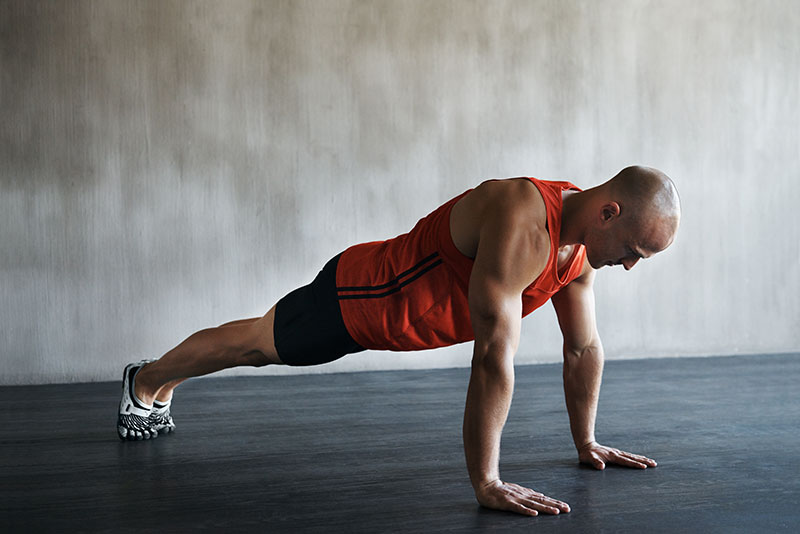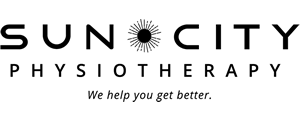
Exercise – Where To Begin?
Exercise – Where To Begin?
There are many reasons to exercise including improved health, fitness and aesthetics. For most people who begin an exercise program they will likely see improvements in all of these areas if their programs are of adequate intensity, duration, frequency; and if their exercise selection is appropriate.
Most people’s exercise journey takes them to a local gym or their basement ‘fitness centre’ equipped with a few bands, some light dumbbells, maybe a bench and some rather old and dusty cardiovascular equipment such as rickety stationary bike/laundry drying rack. A local public gym is usually much more impressive and typically presents with countless options of equipment including a variety of resistance and cardiovascular machines, free weights, plus other things such as sleds, battle ropes, bands, balls, weird looking half balls, balance devices, etc. To figure out what equipment to use and then how to use it, you may tag along with a friend (or invite them to your basement), who seems to know what they are doing, or be tempted to hire a certified guide. But personal training sessions tend to cost over $100 per hour – a little steep for most people these days – and in other days too! Here’s some quick suggestions regarding exercise selection when starting out an exercise program, should you being doing it solo or worry that your friend might not be the best person to get tips and directions from.
Lift weights! Resistance training builds bigger and stronger muscles if performed right; but not necessarily huge ugly veiny muscles that stretch your pants and shirts and make you look like some sort of hulk. Your muscles and lean mass can change and likely improve the shape of your body and improve your capacity to lift and perform work outside of the gym. It also can improve your stamina, and cardiovascular fitness! What? Yes, have you ever noticed how when you lift heavy things and especially if it’s repeatedly or over an extended period of time that your heart rate and breathing rate picks up – such as moving furniture or doing some sort of landscaping? Well that’s your cardiac muscle (your heart) and your vascular system (blood vessels such as arteries and capillaries) working together to essentially transport energy to the working areas of your body and also removing the cellular waste products of that energy production away from those tissues to be converted or expelled elsewhere. If you have been rather sedentary, especially, or if you have little time to perform exercises, try combining resistance training movement in pairs (called supersets) or larger circuits of exercises (called circuit training) and try to keep moving. If your heart rate and breathing rate doesn’t pick up and if you don’t see a noticeable improvement in your stamina and energy levels within a few weeks – you probably aren’t lifting heavy enough or vigorously enough.
When it comes to resistance exercises, choose free weights over machines. It tends to lead to better strength and fitness gains that carries over into other functional daily activities where as machines tend to make muscle bigger but do not teach a person how to lift and stabilize a real world object. Even with a simple task such as putting a weight (let’s start with a soup can) in your hand and bending your elbow, it isn’t so simple as simply telling your bicep muscles to contract. Different fibres in your elbow have different angles of pull on the elbow joint and yank on different parts of the bicep tendon.
In addition to this, different fibres in your bicep are recruited depending on the weight, speed of motion, and how tired you are. Also, when you lift the weight upward tension needs to develop around the shoulder and trunk to keep the shoulder from flexing and the trunk from pulling forward. In fact, if standing, your whole posterior chain of muscles needs to engage when doing this to keep you from falling forward – including your glutes, hamstrings and calves. This being said, standing free weight exercises tend to work pretty much every muscle of your body, though lifting soup cans in the kitchen is not going to be the best way to develop a bigger rounder bum if that is what you’re after.
To be clear, a machine is something that follows a fixed pattern of movement whereas free weights have an open path that you have to control yourself in order to perform a movement in a certain way. Even with what are technically called free weight exercises, we can use benches and supports that minimize the involvement of other muscle groups and in effect isolate an area but also eliminate the other areas the need to get involved with functional strength development. With the example above, if you take your soup can to a gym and lean over what called a preacher curl bench where your torso is really slumped over a support and the back of your arms is supported by the same, it becomes an exercise almost entirely for your biceps which might help to make them get huge, but does little to nothing to increase the functional strength or fitness of your arms.
This article could get very long, so I’ll try to start wrapping it up here leaving you with some some suggestions for simple exercises and hopefully leave only a few loose ends to tie up at some point in the future. When lifting weights for general strength and fitness gains, I encourage people to include a pushing forward movement, a pulling back movement, a pushing up ward movement, and a squat – or preferably a deadlift motion. This will challenge every major muscle of your body and help your develop functional strength, especially if they are done on your feet, too.
Here are some examples of exercises for each of these patterns with a free-weight option, and machine option side by side:
Forward Push: good for chest, shoulders and triceps in particular
Horizontal pull: good for upper back, biceps and forearms in particular
Vertical push: good for shoulders, upper traps and triceps in particular.
Deadlift: good for legs, glutes and low back in particular.
If you have particular areas of weakness or orthopaedic concern, some additional supplementary core, hip, or shoulder exercises may be incorporated. Or if pain is present in any area of the body, I would recommend getting clearance with your doctor and getting an evaluation by a physiotherapist or a qualified kinesiologist such as myself to help address the other issues that need to be dealt with first. I hope this provides help for some of you out there. Let me help you resolve or manage your particular concerns and help you to become a better, stronger, more capable version of yourself.
Chris Burton is a registered Kinesiologist and CHEK Practitioner.
